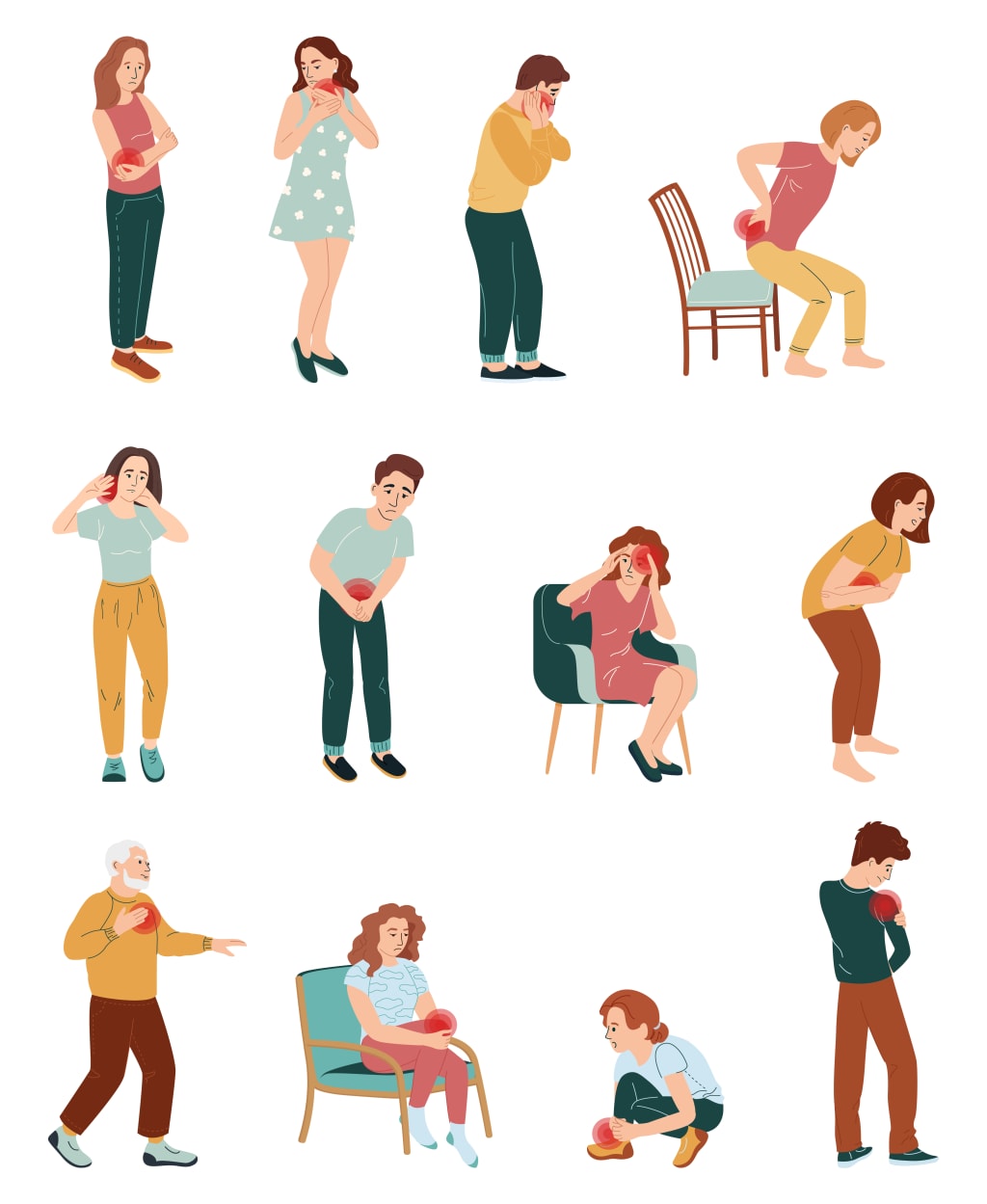Navigating Chronic Pain: Tips for Effective Management
Pain Management

Chronic pain, characterized by persistent discomfort lasting for weeks, months, or even years, can significantly impact one's quality of life. Unlike acute pain, which typically signals tissue damage or injury and resolves as healing occurs, chronic pain persists beyond the normal recovery period. It can stem from conditions like arthritis, fibromyalgia, back injuries, or nerve damage, among others. Managing chronic pain requires a multifaceted approach that integrates medical treatment, lifestyle adjustments, and psychological support. This article explores various strategies and tips to effectively manage chronic pain and improve daily functioning and well-being.
Understanding Chronic Pain
Chronic pain is complex and varies widely among individuals. It can be challenging to treat because its causes and manifestations differ. Some common types of chronic pain include:
- Musculoskeletal Pain: Arthritis, back pain, and fibromyalgia fall into this category, affecting muscles, bones, joints, and tendons.
- Neuropathic Pain: This results from nerve damage or dysfunction and can feel like shooting or burning sensations.
- Visceral Pain: Originating from internal organs and often associated with conditions like irritable bowel syndrome or endometriosis.
- Psychogenic Pain: Linked to psychological factors and often seen in conditions such as depression or anxiety.
Each type of pain may require specific treatment approaches tailored to its underlying causes and individual patient needs.
Medical Interventions
- Medication Management: Pharmacological treatments for chronic pain include nonsteroidal anti-inflammatory drugs (NSAIDs), opioids (used cautiously due to addiction risk), antidepressants (to modulate pain signals), and anticonvulsants (for nerve-related pain).
- Interventional Procedures: These include nerve blocks, epidural injections, and joint injections, which target specific areas to reduce pain signals.
- Physical Therapy: Exercise programs and physical therapy can improve strength, flexibility, and function, reducing pain levels and preventing further deterioration.
- Alternative Therapies: Techniques such as acupuncture, chiropractic care, and massage therapy may provide relief for some individuals, although evidence varies on their effectiveness.
- Mind-Body Interventions: Practices like mindfulness meditation, yoga, and biofeedback help manage pain by promoting relaxation, reducing stress, and enhancing coping mechanisms.
Lifestyle Adjustments
- Exercise Regularly: Low-impact activities like swimming, walking, or cycling can strengthen muscles, improve circulation, and release endorphins, which are natural pain relievers.
- Maintain a Healthy Diet: A balanced diet rich in fruits, vegetables, lean proteins, and whole grains can help manage weight, reduce inflammation, and support overall health.
- Prioritize Sleep: Establishing a regular sleep schedule and creating a restful environment can improve sleep quality, which is crucial for managing pain and promoting healing.
- Manage Stress: Chronic pain often increases stress levels, which can exacerbate symptoms. Techniques such as deep breathing, progressive muscle relaxation, and cognitive-behavioral therapy (CBT) can help manage stress effectively.
- Limit Alcohol and Tobacco: These substances can worsen chronic pain and interfere with medications, so reducing or avoiding them may improve pain management outcomes.
Psychological Support
- Counseling and Therapy: Chronic pain can lead to feelings of frustration, depression, anxiety, and isolation. Counseling, cognitive-behavioral therapy, and support groups provide emotional support and teach coping skills.
- Education: Understanding pain mechanisms and learning self-management strategies empower individuals to take an active role in their treatment and improve their quality of life.
- Social Support: Maintaining connections with friends, family, and support groups can provide encouragement, empathy, and practical assistance in managing daily challenges.
Practical Tips for Daily Living
- Pacing Activities: Breaking tasks into smaller, manageable parts and alternating between periods of activity and rest can conserve energy and minimize pain flare-ups.
- Use Assistive Devices: Devices like ergonomic chairs, supportive footwear, and adaptive tools can reduce strain on the body and make daily tasks less painful.
- Keep a Pain Journal: Tracking pain levels, triggers, and responses to treatments helps identify patterns and guide adjustments in the management plan.
- Set Realistic Goals: Establishing achievable goals, whether related to physical activity, work, or hobbies, promotes a sense of accomplishment and motivation.
- Stay Positive: Adopting a positive outlook and practicing gratitude can improve mood, reduce stress, and enhance overall well-being, which can in turn reduce the perception of pain.
Conclusion
Managing chronic pain requires a comprehensive approach that addresses its physical, emotional, and psychological aspects. By combining medical interventions, lifestyle adjustments, and psychological support, individuals, under the guidance of a pain management specialist in Ahmedabad, can effectively reduce pain levels, improve functionality, and regain a sense of control over their lives. It's essential to work closely with healthcare providers to develop a personalized treatment plan tailored to specific needs and circumstances. With dedication, patience, and a proactive approach, individuals can navigate chronic pain more effectively and enhance their overall quality of life.
About the Creator
Dr. Anushka Patel
Dr. Anushka Patel is a distinguished pain management specialist, holding postgraduate qualifications from Vadilal Sarabhai Hospital, Ahmedabad, and a fellowship from a prestigious institute in Milan, Italy. https://dranushkapatel.com/
Enjoyed the story? Support the Creator.
Subscribe for free to receive all their stories in your feed. You could also pledge your support or give them a one-off tip, letting them know you appreciate their work.






Comments
There are no comments for this story
Be the first to respond and start the conversation.